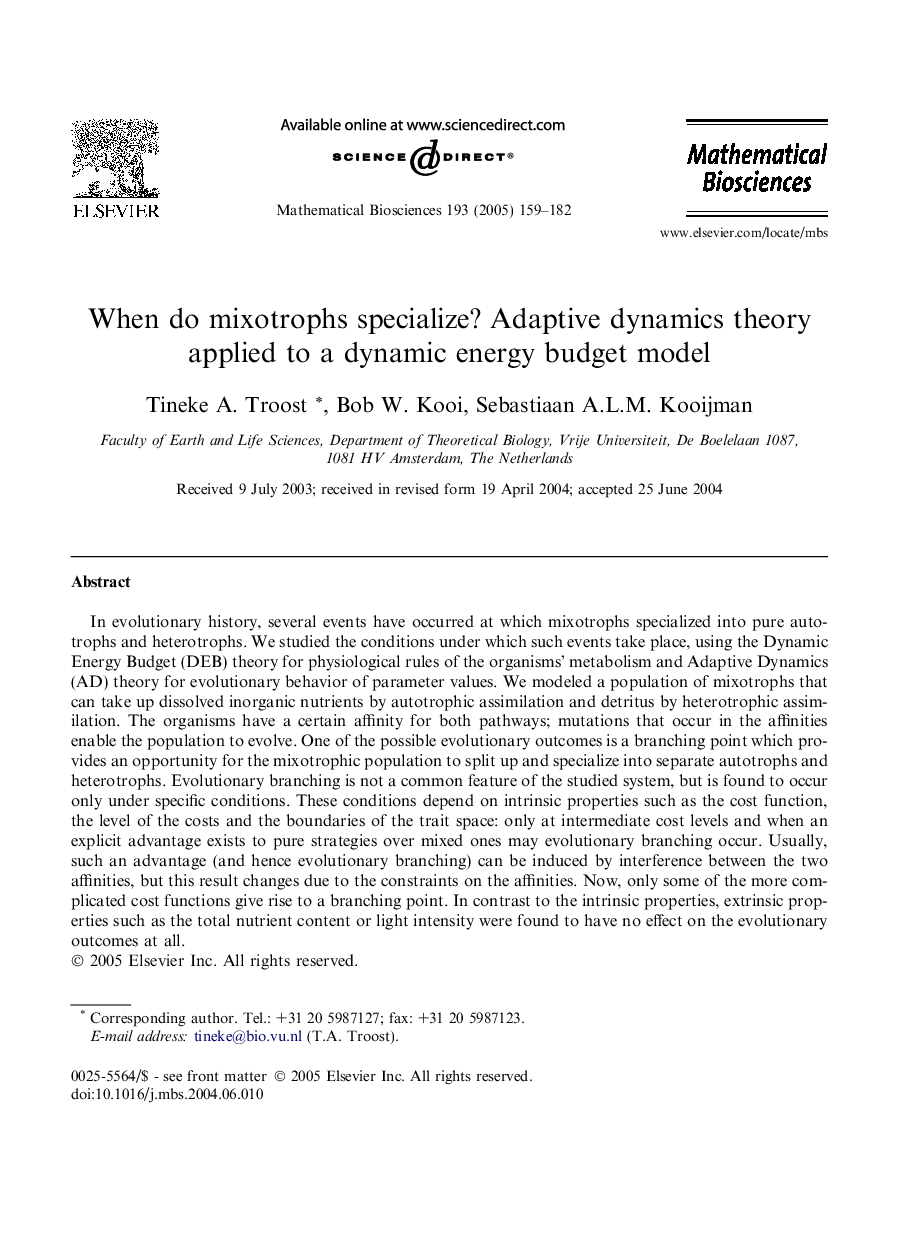| Article ID | Journal | Published Year | Pages | File Type |
|---|---|---|---|---|
| 9471089 | Mathematical Biosciences | 2005 | 24 Pages |
Abstract
In evolutionary history, several events have occurred at which mixotrophs specialized into pure autotrophs and heterotrophs. We studied the conditions under which such events take place, using the Dynamic Energy Budget (DEB) theory for physiological rules of the organisms' metabolism and Adaptive Dynamics (AD) theory for evolutionary behavior of parameter values. We modeled a population of mixotrophs that can take up dissolved inorganic nutrients by autotrophic assimilation and detritus by heterotrophic assimilation. The organisms have a certain affinity for both pathways; mutations that occur in the affinities enable the population to evolve. One of the possible evolutionary outcomes is a branching point which provides an opportunity for the mixotrophic population to split up and specialize into separate autotrophs and heterotrophs. Evolutionary branching is not a common feature of the studied system, but is found to occur only under specific conditions. These conditions depend on intrinsic properties such as the cost function, the level of the costs and the boundaries of the trait space: only at intermediate cost levels and when an explicit advantage exists to pure strategies over mixed ones may evolutionary branching occur. Usually, such an advantage (and hence evolutionary branching) can be induced by interference between the two affinities, but this result changes due to the constraints on the affinities. Now, only some of the more complicated cost functions give rise to a branching point. In contrast to the intrinsic properties, extrinsic properties such as the total nutrient content or light intensity were found to have no effect on the evolutionary outcomes at all.
Keywords
Related Topics
Life Sciences
Agricultural and Biological Sciences
Agricultural and Biological Sciences (General)
Authors
Tineke A. Troost, Bob W. Kooi, Sebastiaan A.L.M. Kooijman,
